Text
The meaning of ‘touch’
The dictionary meaning of touch would be something like to be in contact with or to ‘feel’. How will this definition change now? As we live in this world where it might be difficult to shake hands effortlessly and everything you shake hands with a person, you will unconsciously wait till you can wash your hands. Is this what a post pandemic life will be looked as? But what is post pandemic anyway, its been 7 months and the problem is not even close to its finish line. However I am digressing from the topic of this blog.
Coming back to what and how will the meaning touch be realised in the modern day now?
Why is it important to have tangible things for humans to be felt and touched. How textiles play a major role here?
In Gibson’s account, therefore, energy flows into bodies from the environment and energy flows out from our bodies into the environment, such that it is impossible to understand the body without considering the environment
A persons haptic system is different than their visual system. A person when in a particular environment has the ability to alter it and make changes to it, whereas in a visual system, a sense of touch is missing, which also results in a very linear mode of perception. Here, when we introduce something tangible, something that people can feel it make it more and more individualistic as an experience. The individual has a sense of altering the environment. He/she is the key player, whereas in a meagre visual system he/she are meagre spectators. Can they alter what they see? Perhaps no.
“If emotions are merely private, interior, subjective responses then they tell us nothing objective about our world. Once we see that emotions exist precisely because of the ways they are connected to our shared world and permit us to function within it, then it becomes possible to recognise their crucial role in our communal well-being.” In my journey of researching for my grad project, there was a major revelation in the school of thought I was progressing with. Only halfway through the journey did I realise that my approach towards design was to target the emotive qualities behind an object. In the start it was quite wholesome to know that famous designers like Don Norman have written multiple books on these subject and there is a plethora of knowledge out there that needs to be discovered. What I have read by far or worked on is maybe as minuscule as the virus in the world currently! However, the minuscule virus had the potential to change the world!
Overall wellbeing. Adults require human touch to thrive. "In recent years, a wave of studies has documented some incredible emotional and physical health benefits that come from touch. This research is suggesting that touch is truly fundamental to human communication, bonding, and health."
When we try and understand the tangible aspects, it is important to not forget the other senses that are linked with it too. Touch is not just a meagre touch, it is a way pf communicating information. When I touch a cloth, I know it is soft, I know it is warm, I perhaps know the material as well. When I touch a human being through a handshake I can tell by the firmness the kind of being I am talking to. I can tell a workers hands or a beauticians hand. Touch is a way of communication. Touch not just in its tactile sense but comes with smell too. Visual worlds and augmented realities have missed this part as of now, but I will not be surprised if they ace this arena as well.
A question one must ponder on, how can a reader describe his expirience of reading on a digital platform v/s reading an actual tangible book be?
2 notes
·
View notes
Photo
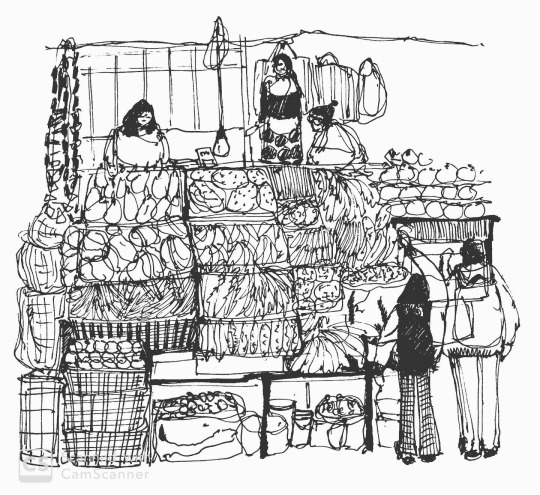
Lal bazaar
A place I usually dread going. Now that I think of it, seems like a whole world within. a multi-storeyed building filled with people and professions. All vendors, from first copies of yeezys to ‘chhurpee’ a very local ‘snack’ perhaps. Usually visit this place to get veggies for the meal that someone or perhaps I am to cook that particular night.
This pandemic has given me plenty of time to contemplate on my own decisions and to think of all the times that seemed normal then and now I cannot fathom when will it actually happen again, for those who are more pragmatic may say that I am just thinking too much and probably life with resume from where it had paused, but a part of me does not want to believe that, do not want to go back to the stagnant monotony again. Perhaps this change Is good.
Perhaps this is the time where we look at globalisation in a new light and try to imagine a world that is not driven by capitalist ideas.
#covid19 socialdistancing illustration illustratorsoftumblr#illustration#sikkim#gangtok#microns#illustragram#hilllife#hill
4 notes
·
View notes
Photo
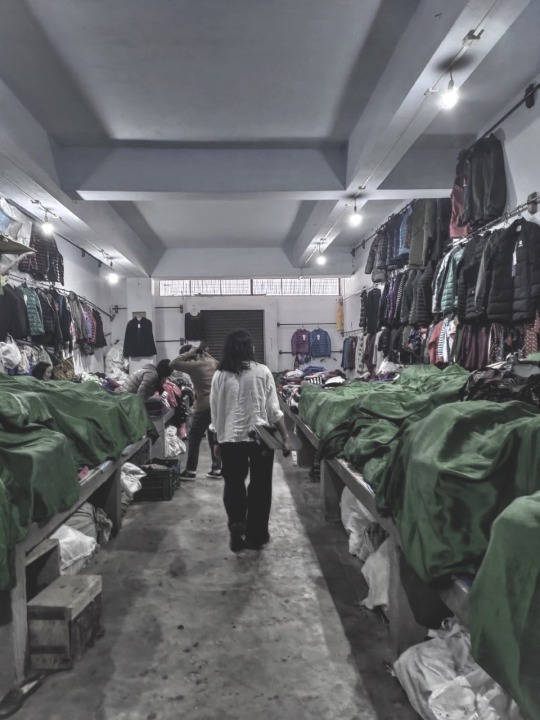
How do you buy?
My attempt lately has been to try to understand my own consumer behaviour more than anyones else’s. Am I an impulsive buyer? Am I a thoughtful one? Do I look at a piece of clothing and try to imagine what I can wear it with and then think about it the rest of the day ? Is retail therapy actually a thing or it is just a very socially acceptable justification to your guilty pleasure? What is that I am looking for when I look at something? Do I look at the physical appearance, do I look at the value out holds. Its been 3 years now that I have been traveling around on my own. Do I go to the souvenir shops anymore when I visit a place? Why do I not go? Do I want to look at a place from a very local point of view than a more generic perception? Do I want to understand the context of the locals more than the impression the place creates only for the meagre 2-3 days I am there for?
When do I buy a thing and associate a meaning to it? Is it when my experience is recorded or when I know the whole cycle of what is happening at what stage?
My attempt here is at look at the tourism sector and understand it in Sikkim. The consumer behaviour of tourists and what are they looking for. MG Marg is the shopping area for Gangtok, what are the kind of products you find there? Are they authentic? Where are they coming from?
1 note
·
View note
Text
Wealth v/s money
Sonam often in his conversations and discussions mentions the word wealth to us. What does it actually mean? In this world that is driven by capitalism can the word wealth mean anything more substantial to us? The dictionary meaning for the given word is more than often associated with monetary gains and valuable possessions, but is this all what we are trying to do, at least here at Echostream?
What is my main objective while I make my graduation project brief? Do I want to earn money, yes who doesn't. But do I want to make money only for myself? The answer will not be very objective but perhaps I want to be able to create ‘wealth’. To be able to create a system where all the stakeholders, all the people in the value chain get equal share of what they deserve, are able to acquire some skills, are developed and skilled Human Resources and are able to sustain themselves. To. be able to create employability, skilful Human Resource, entrepreneurial skills within communities. Making less for smaller audiences. “Too much of anything is not good”. Even the most sustainable material used in quantities will no longer be sustainable. Circular economy is not paradoxical until the time taken for the product to complete a cycle becomes too long.
The best attempt to put this in one sentence will be that, I want communities (be it craft communities or agricultural communities or say both) to be self sustaining and interdependent at the same time. To make each individual to realise the value of their skills, traditions by maintaining a balance between these two words.
0 notes
Text
Design?
What is design for me? This blogpost will just be questions that I want to ask myself again and again. Is design a creative service/product that enhances our living experience? Is design for the masses? or is design very contextual and well thought? is slow design the key to sustainability? Is to be able to create something for the people to make their lives better my goal? I take pride to be coming from a country like India, but to make people realise that the abundant Human Resource that we have is like none other? How will paradoxical words like interdependency and self sufficiency be turned into complementary words? What is my role as a mediator? Why am I doing this? Is design a way to balance climate change, Human Resource development, social causes, and economy? How can I use the human resource in India to my benefit? Is design only for the people who can afford? or is design for someone who makes for self consumption? Is design to propagate the value of crafts? design a system to value crafts or design the crafts?
0 notes
Text
hello, Sikkim
To understand a culture and noticing the reasons behind the observations. How are things a certain way and why must something be the way it is in here. What does creative economy mean and what exactly is echostream according to a 3 day old echo person. What is LA and what is the relevance. How is echo stream responsible for making design relevant in the mountainous regions of India.
To understand the context t one able to design for the space is an approach not very alien to us and is what we are following for the first month. Coming form Ahmedabad this is a very different place and the culture is completely different. It seem fun but also intimidating to engage with creative minds from such varied disciplines. I would use the word intimidating because everyone here has a good hold of he context. I feel one month is too less time to understand a place. but I shall keep my eyes and mind open at all times to notice the unnoticed. Human behaviour is something that has always intrigued me and should be fun to notice the culture inside out here. Not only the traditional local culture but to be able to understand the local trends of the youth is just as important.
Daily conversation can strike interesting pointers that I would just write down to not lose the relevance.
The role of government to actively protect/preserve Sikkims culture and infuse “creative mountain economy” the brand ethos of LA. Reading Daisys doc it only tells me how important studios like echo stream are all over India. Not just any kind of studio but a place where everyone is a collaborator. A creative workplace with only budding ideas.
As a textile student it has occurred to me that many projects I have somehow not justified all my learnings because perhaps there is no perfect solution to a problem or perhaps the problems are problems only because I perceive them as one. We have all been hypocrites at some points in life. Today when I write this down, I am wearing ‘sweatshop’ produced garments, but still writing about how the handloom sector can be improved or there is a need to improve one. How do I solve this internal conflict that I have. How do I preach something that I myself may not adopt.
How to understand this beautiful self sustaining life of the mountain people and perhaps just improve and learn more about design from the already existing model of living.
Some thought provoking things told by Sonam like ” We are living in luxury, where will you get a place where you get a full meal (referring to chola kulcha ) for 25 rupees. Where will you get household help so easily? how will you get so much Human Resource? ”
To think of it in that sense, India is actually luxurious, let us realise it in its best way.
0 notes
Photo

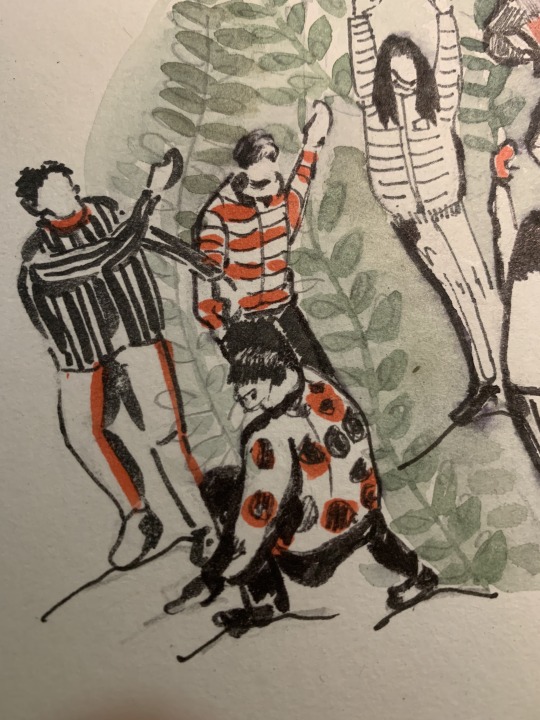
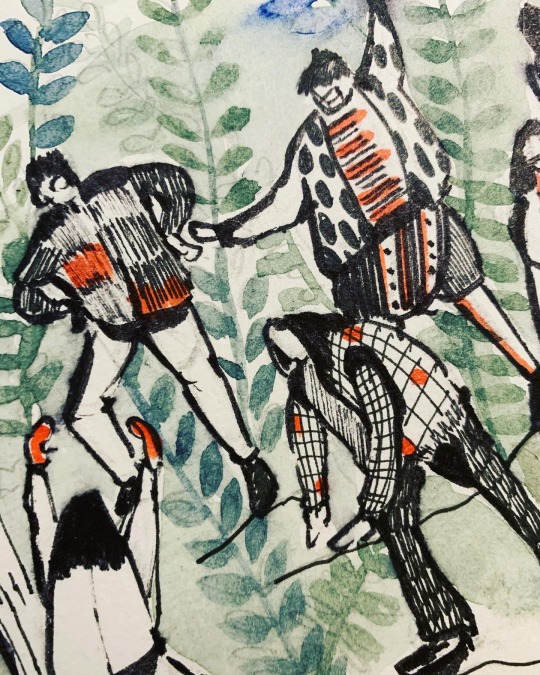
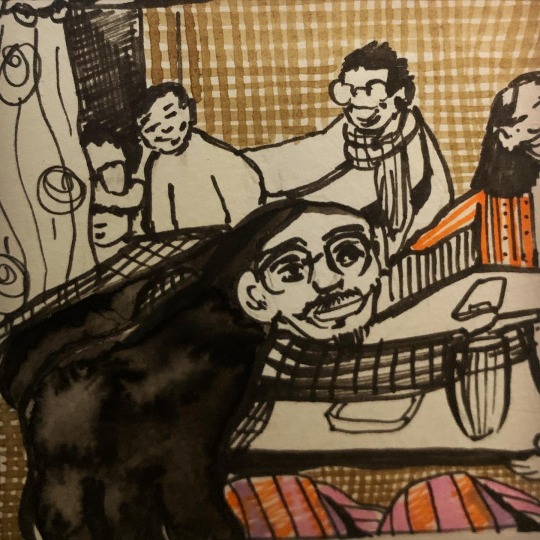
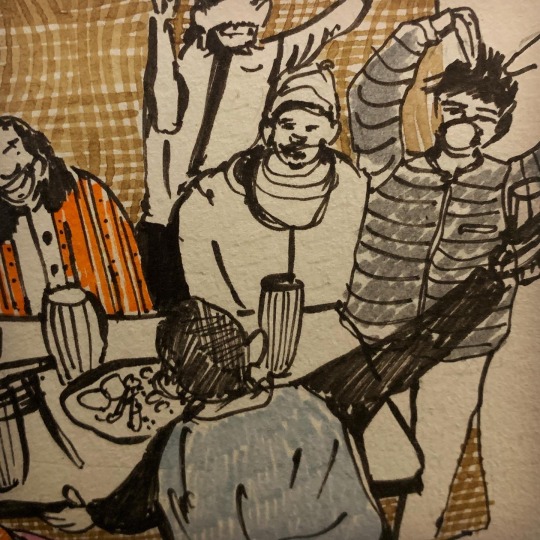
Making some Lepcha friends.
That very night when the music started playing the four of us could not stop ourselves but go and dance along. welcoming smiles made us comfortable the second we reached the dance floor. It was rather funny to dance on Nepali songs that everyone but us don't know of. Feeling disconnected but still wanting to enjoy every bit of it. Also slightly worried about how do we reach home? Where are we supposed to go? Who is going to take us along with them? And as everyone is drinking, who is actually driving?
seemed like these worries were not actually worries but just some city kids being paranoid about absolutely ‘chachu’ things.
“the Lepchas can drive with their eyes closed on these roads”. But honestly I was very confident when Tenzing drove us back even though the car had one of its wheel punctured, no seats and no starter. The next day when we were to come back home, the person who was driving us back had actually danced with us or seen us dancing teh previous night at the festival, which is so wonderful as this is a true community where your job is not the deciding factor of the activities you do or the people you hang ou with. The same person on the way back stopped by his house to collect some oranges for us for the ride till Gangtok. A true display of generosity. From dancing to crazy drives to great food to exhausting hikes to meeting pure souls, Dzongu was like none other.
0 notes
Photo



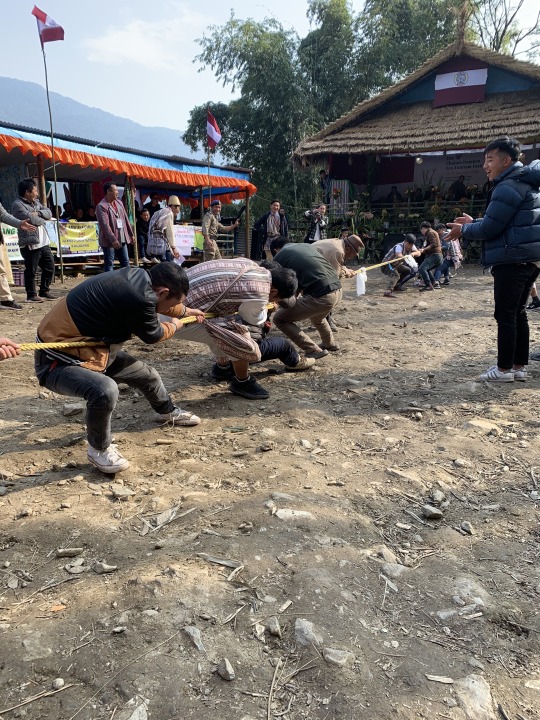
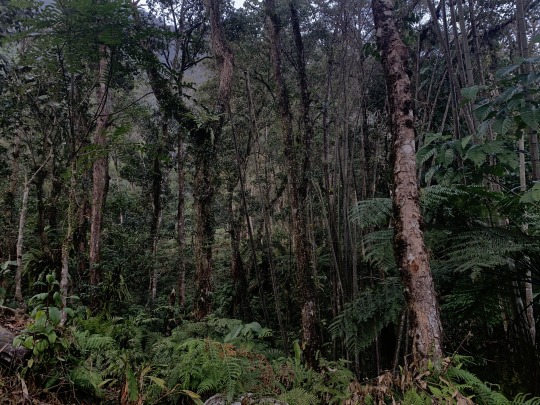


Dzongu.
On my 5th day in Sikkim, I visited this small village in the north of Sikkim, it is a protected area for the Lepcha community who call themselves the original indigenous people of Sikkim. The bhutias and the nepalis have come to settle later. The road to Dzongu, like none other was long and winding of course, but also full of scenic views. Absolutely calm and serene untouched and unexploited by unwanted human presence. On the way you almost get intimidated by how minuscule our existence is as compared to these extremely massive, broad and proud mountains.
After 2.5 hours of ride, we finally enter Dzongu, also to mention how strict the rules are as its is a protected land and we needed a permit letter to enter the area. The orange festival called the “changla dambro” was in a small village called “Gnon”. On our way we saw so many orange orchards, more oranges than leaves. (exaggerating a bit, but you do get a feel of what I am saying). Four of us, very evidently outsiders were looking at the hustle before the event was yet to begin.The locals calling each other from the top of the hill to the bottom, cutting some bamboos, arranging some stalls, beautiful women dressed in their traditional attire. It was beautiful just as a sight.
After settling in, we started looking at the baskets of oranges kept in front of us. So tempted to grab one and eat, we waited till the locals would take it too. Turns out it is no novelty for them hence they were not as excited to take the freshly picked, organic, beautiful oranges that were kept in front of them. Alas! ran out of our patience and temptation, we picked and savoured ourselves.
Orange harvest was a reason to have come together and enjoy natural locally produced food, play traditional games, and enjoy dancing together. One by one the children, dressed in beautiful traditional attires, (handwoven out of nettle fibres) started dancing to absolutely melodious Nepali and Lepcha folk music. trying to absorb this close knitted community as it is, I was also trying to analyse how united everyone seemed. Was it the music that bound them together? was it their closeness to their culture? was it because it was a small town and the interdependency? was it their education system? Was is their proximity to the forest that they had to be interdependent in ways more than one?
We were there for two days and everyone was still very formal with us. we needed to break that ice. It was almost past dawn and the dj started playing and all were dancing. What better way to break the ice, started dancing onto Nepali songs. Was beautiful amidst the trees, mountains and in the far corners of the valleys a bunch of Lepchas and fours kids from ‘Gangtok’ (as now I must say) are dancing. After that 3 hours of exhausting dancing, we had made some good friends who were our hosts and guides for the whole of next day. haha XD. Also made me think for a bit? Will I be this enthusiastic about taking pride in Gujarati folklore? Will I ever get a chance to dance with my people (But as a second generation person who has always grown up in a city, who are ‘my’ people) in the villages of Gujarat? Will I ever be connected to my culture the way these children are?
1 note
·
View note
Photo
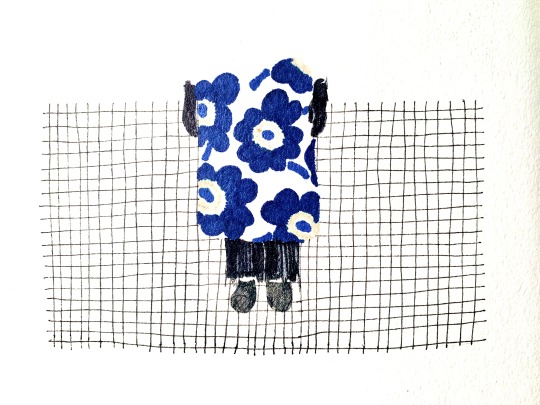
The Marimekko Apron This story at first was not as interesting till I came back and understood that how it actually made sense. My first week in Japan, I was a very conscious buyer. I knew that I would need an apron as many of the courses I had picked were unity and messy in terms of process. As I was playing pragmatic for the 6 months, I decided to go to a 100 yen store and buy the cheapest apron possible there as I have to throw it in the end anyway. The next day in class, I saw this girl who was wearing a marimekko apron. I being myself, kept staring at it for a while mostly admiring but then, I smirked at the look of it and said ‘What a waste!’ in my head. She had stained it with pigments and dyes a couple of times too. I smirked even more and remarked myself that ‘hah what a waste, 11,000 rupees gone down the drain.’ By December, I had only a month left till I go back to India, I looked at my plastic 108 yen apron, and saw that It had marks and stains from each and every course that I had taken up. Every picture of mine that was taken while I was working or documenting my work was in that filthy apron. All my fancy clothes that were bought in my trips to the downtown were hidden by a 108 yen apron, On the other hand, the girl with a marimekko apron was wearing an inspiration throughout, had stains of hardwork and memory on her apron only adding value and meaning. Maybe this time when she saw me throwing my apron into the bin because I wasn’t attached to it, she must have smirked in her head “hah! what a waste!” There are many ways of looking at it, but in the end I still feel she made a more pragmatic choice as most of the year I was seen in the apron more than any thing else. It was the only object that saw me go through all of it. And there is nothing I love more than my work, so the stains on my apron should have been something I value, something that motivates me to work more. But sadly my apron was in the trash already. Now, who was the loser here? fin. bye. But on a different note, does it actually matter marimekko or cheap polyester? what matters is the memory the story that the piece of clothing could tell. What should matter is the amount of pride I take in when I see the stains of hardwork that went in screen printing, yuzen zome , kata zome, it was me and the apron that wen through all of it together. There are different ways of looking at the same but in the end all I realise is that I shouldn’t have thrown it.
1 note
·
View note
Photo

Break Free
My fascination with top views of humans and stripes is unexplainable. But this illustration is my dream break currently. I want a crazy group of people in my room dancing on Abba and singing Aerosmith songs out loud. I am no dancing queen but my heart is full of living the crazy moments of what I have pictured in my head. haha. bye.
4 notes
·
View notes
Photo

Infinite Path
” … in my experience, Tokyo crossings are very much like the circular paths as I have been encountering here in traditional Japanese gardens, thoughtfully designed through the garden-city landscape. People immerse themselves in their (digital) worlds but at the same time they belong to this extended »flock«, moving, at intervals, without catching an individual with its touch. Solitude in gardens is an obvious thing, whereas in multidirectional pedestrian crossings, it is different, the dynamics between an individual and the crowd is extremely intense and fluid. Sequences of red and green are structuring the choreography of life, of walking and standing still. The movements, voices, words are folding the noise and silence fields of time …”
(a fragment from the Petra Kaps working notes, Tokyo, 12 November 2013, 22:31)
8 notes
·
View notes
Photo

When health comes with a price anyway, I will revert back to my chocos and cereal. fin. The point is to make prints inspired by the 70s American style. More floral wallpapers, checkered table cloths and greta importance to family breakfast. What all does it take for it to look more vintage? What will it look like in the Indian context.
Also it is my deepest wish to have a fine breakfast in my house with all my close family present. i wish to make the egg of everyones choice, have a toast of bread just warm enough so that the butter melts. A pint of orange juice freshly pressed. Some nice tea. A nice tea set. A bowl full of fruits. Some miso soup and sticky rice for my exchange soul. and lots and lots of stories.
2 notes
·
View notes
Photo
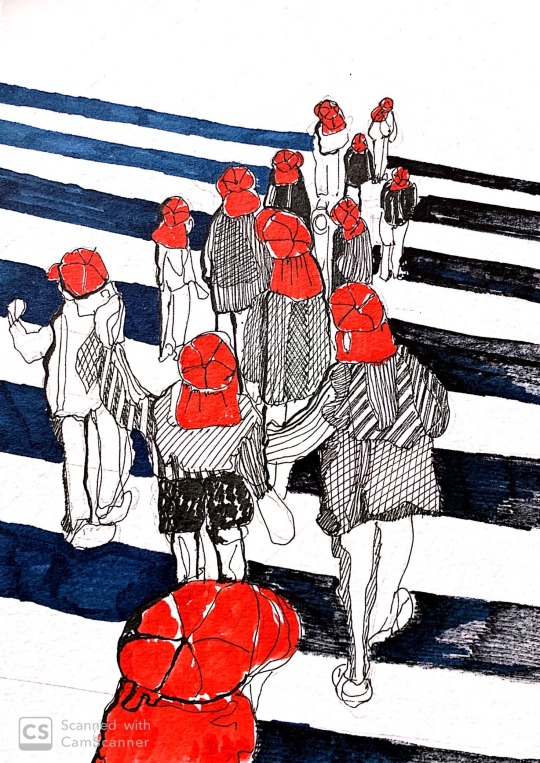
Roads of Hashimoto
There are so many stories that I want to share about the road I walked to my college. Sometimes when you are in a hurry you miss out all the little things that are so beautifully curated naturally. I used to wake up a tad bit early to not miss out on these beauties.
There was a pre primary school on the way. Little chubby kids always in their house cap are seen following their teacher to some or the other field trip. Sometimes to the kombini (convenient store) or sometimes to the fire station. So happy and delighted to see children with such bright futures and fortunate lives. The teachers are assisting them to cross the road as well, and the cars and bikes on the roads so kindly politely will smile are in a way assisting the teachers to cross the road.
This warmth, this atmosphere is what puts one in awe.
#hashimoto#preprimary#housecaps#zebracrossing#red#japan#culture#order#illustration#winsorandnewton#watercolour#watercolour illustration
2 notes
·
View notes
Photo

Break Free
My fascination with top views of humans and stripes is unexplainable. But this illustration is my dream break currently. I want a crazy group of people in my room dancing on Abba and singing Aerosmith songs out loud. I am no dancing queen but my heart is full of living the crazy moments of what I have pictured in my head. haha. bye.
4 notes
·
View notes
Photo
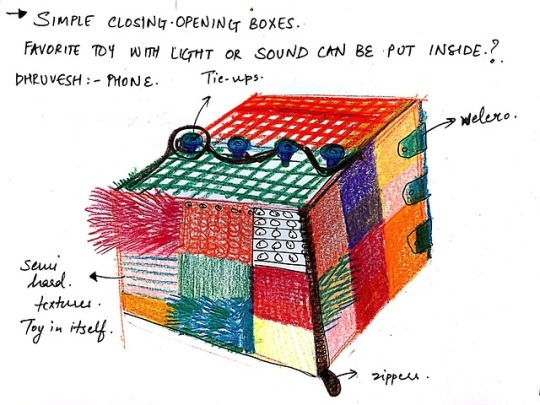
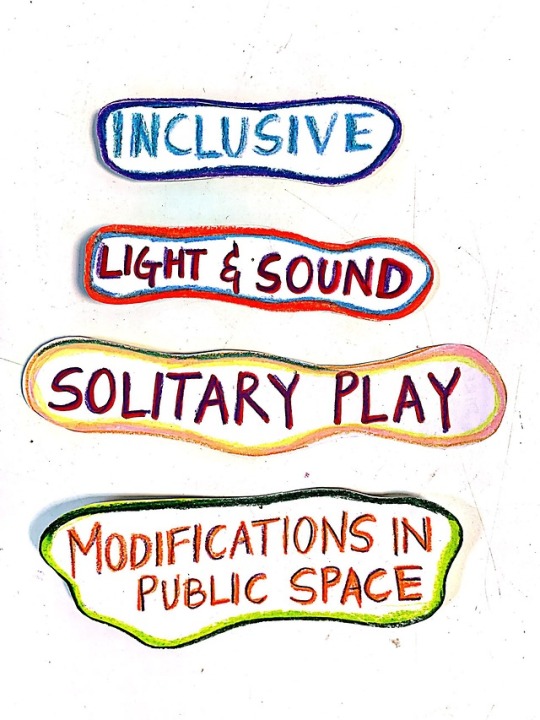
WILL I WILL I NOT
This blog I supposed to be my anecdote sharing, happy sad moment recorder or simply a cushion for my splurging emotions. So what do we have here today?
I am 20, a textile design student from the ‘Prime’ institute of India. Given were two options for our choice for the final project, one being a special needs school, and other being the vivacious, full of character old city of Ahmedabad. My first instinct was to choose the oil city, because ahhhh the colours, the people, and the architecture so beautiful I could die. But I had to be hard on myself, chose something I would always run away from, I ‘challenged’ myself opting for the special needs school.
I think it was an eye opener, the bubble we live in, the first world interests and fancies we want to live upto. I enjoyed every bit of research I did. But to my greater disappointment even towards the end of the whole process have I reached where should have? Have I targeted the problems of real need? Or am I just a textile designer with an average will of making something tactile and stimulating. I wish to be more than that. I wish to put my heart and soul in the last two remaining weeks, and write again for what I would have achieved or not achieved then.
3 notes
·
View notes
Photo

UNTOLD STORIES OF GARMENTS
Sustainability! I come across this word and I scroll, swipe or turn to next. Do I realise depth of this word? Do I understand the need of the hour?
How many times do we all, in fact, take the triviality and see it under a magnifying glass? Are drastic climatic changes trivial or just not “large” enough?
‘What I need’ is not a constant and perhaps, the needs of today won’t be the same as the needs of tomorrow. To explain this further, I would like to quote the United Nations general assembly 1986 definition for sustainable development:
“Sustainable development is the conscious and judicious use of resources that meet the need of today without compromising the ability of future generations to meet their own needs.”
Sustainability is often looked as an ‘call for action’ whereas I believe it should rather be the basis of a living — deeply embedded in culture and human life.
And what brings me to make this my current discourse? Well, I owe credit to the eye-opening views on sustainability that I was fortunate to experience in person. It all began with two contrasting views of sustainability, a difference that made all the difference.
Two friends, one from Glasgow and one from Sweden spent many noons conversing about ideal life choices: What truly is a conscious choice? When do we know how to make it? How do we choose?
The way the conversations led on was very interesting as all of us had a distinct opinion on sustainability, framed by individual context — the world around us. The ethnic diversity also contributed in the formulation of these ideas and approaches regarding sustainability.
The conscious choices about what is needed and what is wanted, were staunch, as though etched like a tattoo on each of us. So I decided to hop onto the bandwagon and carve my own definition for sustenance. For me the journey starts with what I devote most of my time to: textiles.
I had always known that the textile industry was responsible for a huge amount of waste. But I did what was easy — turned a blind eye to it.
During my time in Japan, I would be overwhelmed to see the amount of clothes available in the market while cruising downtown. Knowing the backstory, was one part of the pain I felt but seeing them spill out of the racks in a shopping frenzy was a pit in my stomach. Behind these trendy outfits that people hoard in their wardrobes is a dark truth — the labour intensive market of developing countries like our very own. I hit me when I starting feeling guilty, and partly responsible for this arrangement.
And one day I was triggered for real change. At this point, I needed a warm jacket regardless of what I knew or did not, about what goes inside making a single piece. But it was going to be different this time, I was going to make a thoughtful, conscious, sustainable choice. I intended to buy just one and my friend suggested that we should to go to the second-hand market for the same.
To me, that sounded like I would need a surplus of courage. So I reinforced the thought I put in the first place — “Remember, it is choice I’ve made: a conscious, sustainable one!” I said that to myself and went ahead.
That was the first time I ever went to a second hands shop. I hated it. The first thing that came to my mind was: “Somebody must have died in it.” It smelled of sweat and dust. It made my skin crawl. I was in the shop only because my friends wanted to be in it.
Just a few moments later, I saw my friend of mine picking out clothes, and for every piece that she thought would suit me, she squeaked in excitement! She imagined me wearing it, with one arm that had been inked all over to complete the look! I looked at her for a second, and surprisingly it made me laugh. I thought it was a good way to pass my time here as I did not fancy the clothing anyway.
Following her entertainment scheme, now I started picking out clothes that would suit my friend, whilst started imagining it on her. I fell in love with this activity and we did it for so many more clothes. Every time I would pick out something I would imagine a look for her and give a complete backstory of how the girl who owned it would have looked and how she would have worn this. Gradually, every piece of garment became a story, as if narrating a tale for itself.
Now, I really did not think of it as someone died in it. Instead, I thought of a someone, who accomplished their life long goal in It. It changed my perspective on second hand clothing. Soon, I transitioned from being a hater, to a propagator. Not only did I find the correct jacket for me, but I also feel really happy about the purchase. As a textile design student, besides the ethical reasons, I now want to put a soul in a piece of clothing.
#sustainable#sustainability#secondhand#narravtives#recycle upcycle garments#sweatshops#outsourcing#fastfashion#slowfashion#sustainbleproduction#sustainablelifechoices
1 note
·
View note
Text
What have we become?
The man was going back and forth. Right when he thinks the traffic has cleared and he can cross the road, the extremely ‘in a hurry’ bike accelerates and zooms right at him. Not scared yet but certainly helpless, the man take two steps backwards, very timidly now with all his courage tries to cross the road again, but cannot as this time its a hasty car that has flashed its arrogance by being indifferent to the man’s presence. Back and forth back and forth of 5 minutes but now it seems like the traffic has cleared up, the final attempt is made and this time too, there was a pompous car had to dash in. Just two more minutes, the traffic has cleared for real this time, the man had successfully crossed the road.
This happens to me almost everyday, I complaint everyday, the only difference? I had a pair of functioning eyes to see what a horrible place this world has become, but oh thank god, he did not!
Again, What have we become?
1 note
·
View note